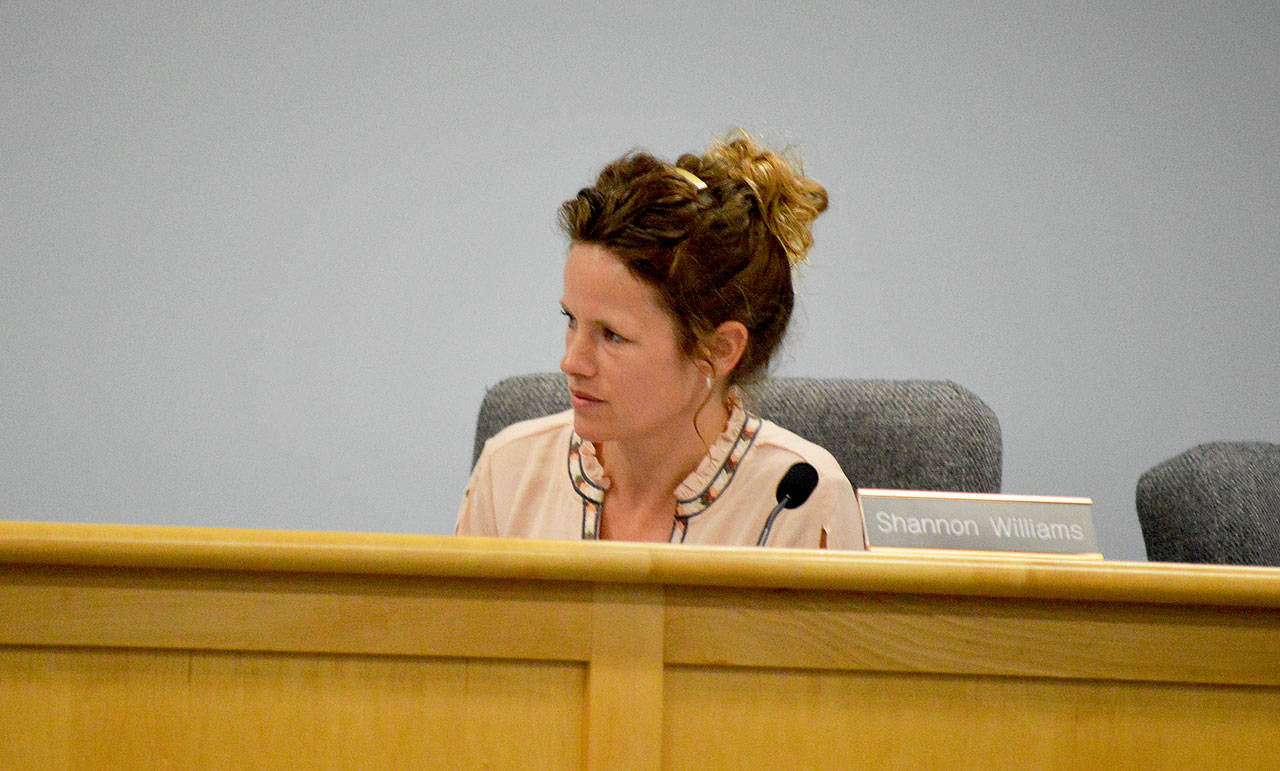Adoption of the nearly-completed update to the housing element of Island County Planning and Community development’s comprehensive plan has been postponed because of the planning commission’s new questions about the kind of people who will be served by affordable housing.
Shannon Williams, a new commissioner for district three, which encompasses North Whidbey and Camano Island, said during a planning commission meeting Monday she doesn’t feel comfortable moving forward on the draft element until she learned more about it and made some changes.
Williams said there were a lot of parts of the element that she didn’t like.
“It’s not a right for everyone,” she said of living in Island County.
“It’s something you can earn … People who want to be here will work for it,” Williams said.
She called some of the goals and policies “handouts,” and that affordable housing shouldn’t be the entire goal of the project.
During public comment, Oak Harbor resident James Marrow expressed concerns that the type of housing the county is trying to promote would attract drug users and “facilitate what looks like an endorsement of a certain lifestyle.”
Williams agreed with Marrow and said she knows “what happens when things are given to certain people who aren’t making the money to have them.”
The draft goals in the element are to promote fair access to housing and shelter for all persons, promote the development of different workforce housing types, encourage preservation of existing housing stock capacity, increase the supply of subsidized housing, collaborate with other jurisdictions and housing organizations to address county-wide housing issues.
Commissioner Tracy Gilroy said she might disagree with some of the goals. The first one, to promote fair access to housing by all persons, is one she expressed issue with.
“Should those people in the woods have housing?” she asked. “They’re nicely tucked away in the woods, maybe they should stay there.”
Commissioner Beth Munson agreed, and suggested that many homeless people live in the woods by choice.
No commissioner present spoke in opposition to Williams’, Gilroy’s or Munson’s assertions, except Gilroy said homelessness doesn’t necessarily presume drug use.
Assistant Planning Director Beverly Mesa-Zendt pointed out to the commissioners that the county is required by the state Growth Management Act to create opportunities for multiple housing types when possible.
Mesa-Zendt also said it’s very late in the process to introduce such a large “philosophical shift.” The public hearing and official recommendation of adoption of the element was originally scheduled for the June 25 planning commission meeting.
The housing element is meant to guide long range planning policies in the future.
“This guides how we make land-use decisions,” said Meredith Penny, a long ranger planner. “We aren’t building housing. We aren’t developers … We set the framework and the environment for certain things to occur in the private market.”
The draft housing element includes data from 15 stakeholder interviews, a survey with approximately 2,500 respondents, a housing needs analysis and housing barriers analysis.
The draft goals and policies were presented at the April 9 planning commission meeting, and there were questions about the need for different types of housing but no questions were asked about the type of people who would utilize affordable housing.
District two representatives, Jake Sandefur and Darin Hand, were not present at Monday’s meeting.



